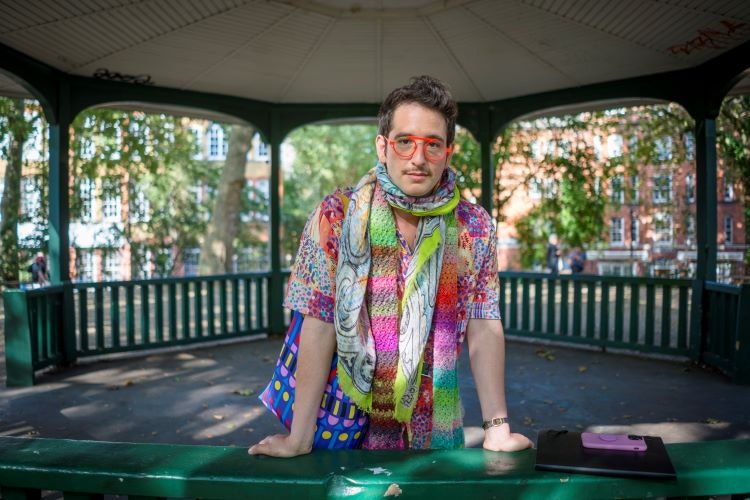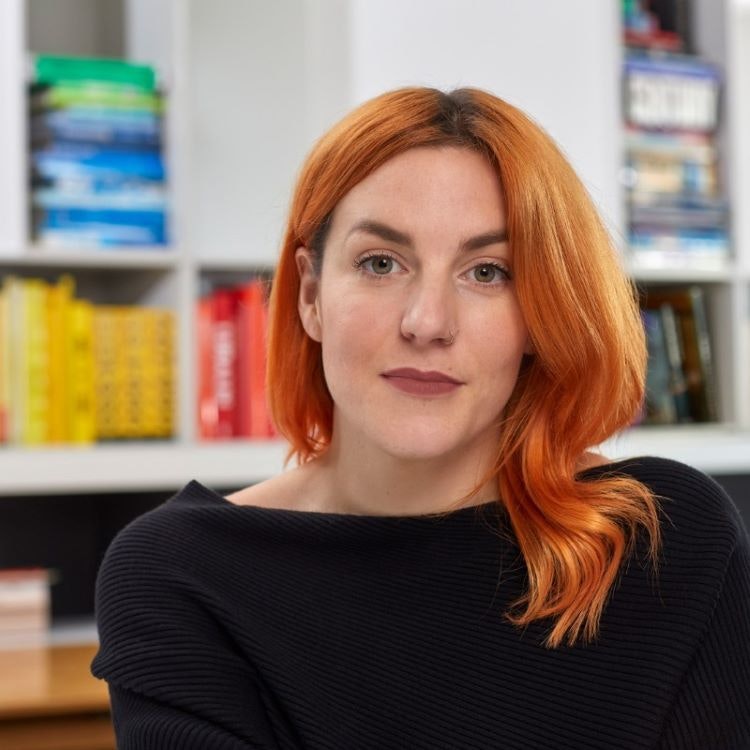Designer and artist Adam Nathaniel Furman

We can address the challenges that the LGBTQ+ community faces by using our platforms to advocate for queer rights, safety and a right to equality within our professions and in wider society. It is not a design problem – not everything is a design problem – but designers can let it be known where they stand and who they support. I have been disappointed, but not surprised, by the almost universal silence in the design industry on this issue. While I understand that some queer designers might be afraid to speak up, I would strongly ask any designers who consider themselves allies to speak up, be loud, be supportive and let it be known that our industry is not a safe space for any kind of chauvinism.
Morrama founder and creative director Jo Barnard

Day to day, the most important thing we can do as designers is to make sure LGBTQ+ people are considered in our briefs. We often start a design project by creating personas, and these are useful but not always inclusive. Just as age, race or nationality may well influence how you use an app or a restaurant, so does gender or sexual orientation. These subtleties are often overlooked. We have the creative opportunity to create products and services that are truly thoughtful of the physical and emotional needs of LGBTQ+ users. Let’s never let a group of people who already feel marginalised, feel like an afterthought in our design process.
Forsman & Bodenfors creative Conor Patterson

You can’t just wave a flag anymore. When it comes to fighting anti-LGBTQ+ rhetoric, visibility and action are paramount. They’re almost obvious at this point. Make your allyship visible by letting people know exactly what you stand for as a brand. And be actionable in your allyship. What LGBTQ+ organizations are you working with? How are you supporting these efforts year round, in big and small ways? And what are you doing internally as a company to support your LGBTQ+ employees? These are just the basics.
But for me, the most important thing brands and creatives can do, especially now, is commit to never backing down. And I mean really commit, without hesitation, ambiguity, or fear. We’ve seen brands dim or even completely erase messages of their allyship in the past couple weeks, and it’s incredibly disheartening – and in my opinion, pathetic! Allyship isn’t a transaction and it should never, ever waver. No amount of pressure should ever bend towards bigotry. I believe agreeing to that as the unified, core foundation of any creative partnership is the first place to start.
If you’re gonna say it, be it. And most of all, mean it.
Sibling Rivalry partner and executive creative director Lauren Hartstone
I think that when people hear the rapidly growing list of anti-LGBTQIA+ legislations in the US it can be hard to understand the real, everyday consequences, especially if you don’t live in one of the states currently under attack by lawmakers. Why should people care? What is the physical and emotional toll on our kids? How can we protect queer youth?
Our opportunity — and honestly our responsibility — as designers and filmmakers is to help underrepresented communities tell their stories. The LGBTQIA+ community cannot be erased, and as storytellers, we are here to tell their truths with a rawness and honesty that will resonate.
But to get the message out there, it is essential that we collaborate with brands who are committed to supporting the LGBTQIA+ community, and brave enough to stand by it.
Brands have the unique ability to amplify these stories across their channels. Not only do they have a built-in captive audience, but they also have the power to partner with influencers and celebrities who are also impacted and committed to making a difference. We need to work together to get LGBTQIA+ voices heard and help enact change.
Bulletproof digital design director Chirag Grover

As a queer designer, I’m always seeking out ways our industry can do better at driving acceptance and equality at every relevant opportunity. 2023 is a pivotal year for the LGBTQ+ community, given the record number of anti-LGBTQ+ rights introduced in the US this year. I don’t want anyone in any part of the world to feel unsafe walking down the street.
Pride month is a key moment for brands and their design partners to help forge a safer and more inclusive world by hitting the right tone. Authenticity is essential. Get it right, and brands can convey their support for Pride while also ensuring they stand on the right side of history.
The way brands work with their design partners is a big part of this. Inclusive design, collaboration, authentic representation, supportive policies, social responsibility, donations, partnerships, and consumer education are just some of the crucial steps brands can take as we march into arguably our most essential Pride to date and beyond it.
Thompson managing director Rachel Cook

Dear designers and brands. Please put down the rainbow logo, pick up your phone and Google ‘Section 28’. Now, ask yourself if you’re doing enough to use your platform to prevent us sliding back into that place, or if you’re simply pink-washing (aligning yourself with the LGBTQIA+ community for kudos/gain). A more powerful, meaningful and supportive move is to use your platform to raise awareness of LGBTQIA+ charities such as The Proud Trust and Stonewall, for example, through brand collabs, product endorsement and funding of things like The Trans Inclusion Toolkit for schools.
Schuh is a great example of this in action, via their partnership with The Proud Trust. This partnership helps raise awareness of LGBTQIA+ issues with a wider youth audience, which is vital in helping fight the rhetoric and increases reach. It also helps raise funds for the charity, and gives the added benefit of outwardly supporting Schuh’s brand positioning and values, and lots of other indirect benefits. Now, doesn’t that sound better than slapping on some rainbow colours?
Banner image credit: Maxim Studio on Shutterstock

- Design disciplines in this article
- Industries in this article
- Brands in this article










One response to “How can designers address dangers faced by the LGBTQ+ community?”
Maybe less of this nonsense and there wouldn’t be a rise in ‘anti-LGBT’, whatever that acronym means nowadays. Keep politics outside of the workplace we were always told.